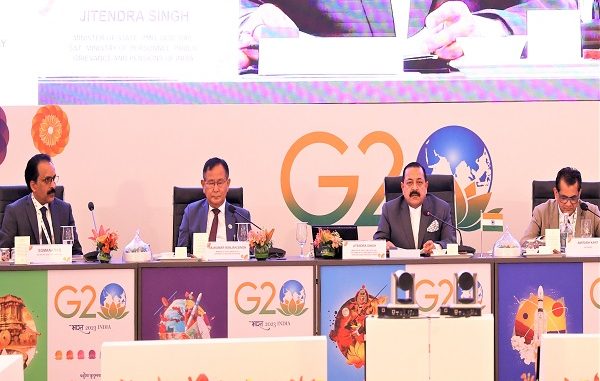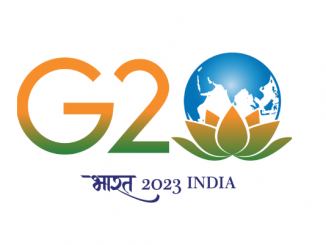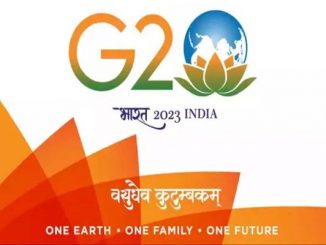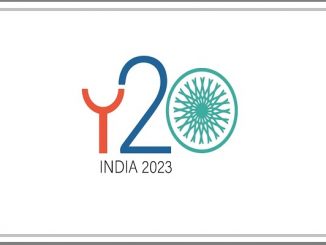
July 06: Union Minister of State (Independent Charge) for Science and Technology, MoS PMO, Department of Atomic Energy and Department of Space and MoS Personnel, Public Grievances and Pensions, Dr Jitendra Singh said here today that with over 140 Space StartUps within a short span of time, India has gained sound footing and the entire world has begun to acknowledge India’s capabilities and her potential in Space Technology.
Addressing the inaugural session of the G20 4th edition of Space Economy Leaders Meeting (SELM) here today, Dr Jitendra Singh said, the credit goes to Prime Minister Narendra Modi who opened up India’s Space Sector to private players which has enabled a quantum of jump in the last few years. Even though India began its Space journey several years later compared to some other countries, it is India today which is offering vital clues and inputs for the benefit of the world’s leading Space agencies
The Minister pointed out that the very fact that during Prime Minister Narendra Modi’s recent visit to the USA, Space related agreements comprised a major component of the agenda is an indication that even the countries which claim to be pioneers in Space technology are today looking up to India for value addition in their Space related activities.
Lauding the private sector, Dr Jitendra Singh termed their emerging role as “pivotal” to the space economy.
Dr Jitendra Singh said global cooperation and alliances are vital in light of the growing ambition of humans to explore outer space. An alliance of responsible space-faring nations for enhancing the share of the space economy in the global economy is the need of the hour,
“The future development of humanity lies in our collective ability to responsibly harness, pool resources and utilise space technology towards achieving sustainable development goals and improving the lives of common man,”
“An alliance of responsible space-faring nations for enhancing the share of space economy in the global economy is the need of the hour, as rightly captured by the theme of this event. This aptly captures India’s G20 theme of “One Earth, One Space, and One Future” as we say in the Sanskrit language ‘Vasudhaiva Kutumbakam’,” he added.
The Minister said, “Since space technology integrates various pillars of the economy under one umbrella, the investments made here will have a multiplier effect on the overall development of countries and economies. Studies have forecast that the space economy will be the next trillion-dollar sector in the coming decades. Considering the importance of space in the economy, India has embarked upon various measures to open up, integrate our space economy and develop alliances with other countries,” he said.
Welcoming the private partners and think tanks from across the globe, India’s S&T Minister hoped the Space Economy Leaders Meeting of G20 countries will lead to convergence on the use of space technologies to have a real and positive impact on the planet.
“Considering the fact that G20 countries along with partner countries represent approx. 85% of global GDP, 75% of world trade and 2/3rd of the world’s population, the decisions we take here will have a far-reaching impact on the future of the space economy,” he said.
Dr Jitendra Singh said India had demonstrated the application potential of space technology during 6 decades of the Indian space programme.
“Today, space has touched all walks of human life, including science & technology, telecommunication, agriculture, education, health, rural development, disaster warning & mitigation, studying climate change, navigation, defence & governance to name a few,” he said.
Heads of National Space Agencies, leaders of space industries of G20, Senior diplomats of G20 nations and invited countries and other dignitaries are attending the two-day Meeting.
Disclaimer: We donot claim that the images used as part of the news published are always owned by us. From time to time, we use images sourced as part of news or any related images or representations. Kindly take a look at our image usage policy on how we select the image that are used as part of the news.


